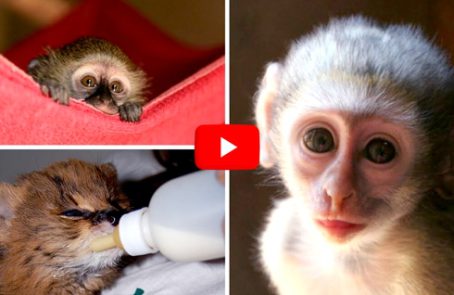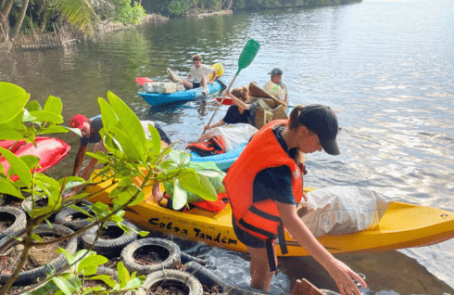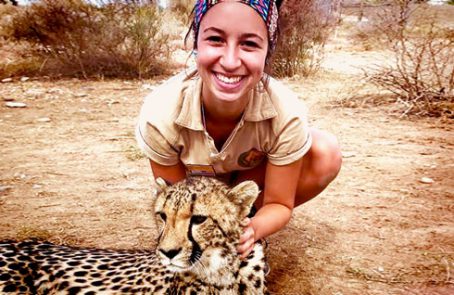Volunteering with animals and wildlife is a rewarding, fun and unique opportunity. Volunteers can work closely with their favorite pets at animal shelters, or observe unique animals they never thought they would have the opportunity to see. Animals across the globe are in need of conservation and general care, both wildlife species and domesticated. Just as there are humans in need across the globe, animals are also in need of help. Many wildlife species are endangered and on the verge of going extinct, due to habitat loss, illegal hunting, neglect, abuse and the list goes on. If you have a passion for domestic animals and wildlife, volunteering for wildlife conservation and the care of animals is the perfect opportunity for you! Volunteering with animals first became popular in domestic animal shelters. Still today, animal shelters have very little funding from government organizations and are therefore short-staffed and in need of extra helping hands. As more and more wildlife species are becoming endangered in the wild, volunteering at wildlife sanctuaries or in the wild to conduct research on these species is gaining popularity worldwide. Today there are a wide array of organizations dedicated to helping animals around the globe. One of the most well-known organizations is the World Wildlife Fund (WWF). This organization employs conservationists that work hard on all levels to protect the world’s most vulnerable species. In addition to conducting hands-on conservation work such as protecting sea turtle nests, WWF efforts also focus on spreading awareness of the importance of wildlife conservation. Due to WWF’s long list of conservation efforts and tasks, they need both financial and hands-on assistance to continue and expand their efforts. The International Rhino Fund (IRF) is another well-known, fantastic wildlife conservation organization that focuses on the conservation of rhinos in Asia and Africa. The IRF online shop is one way to financially support their efforts to support the five most-poached rhino species. The International Union for Conservation of Nature (IUCN) was the first global environmental conservation organization, with members from over 160 countries. The IUCN releases each year what is known as the Red List of Threatened Species, or more commonly known as the most comprehensive and accurate, list of endangered species. This organization has more than one thousand NGOs as partners that it supports. The IUCN is still the largest of such organizations, and since it supports efforts of NGOs, is always in need of volunteer power and financial support.
5 types of volunteering with animals programs
1. Animal Shelters
Animal shelters are the classic image of volunteering with animals. Dog and cat lovers will enjoy getting to provide company to these pets, and assisting in finding them permanent, loving homes. Volunteers’ daily tasks include feeding the dogs and cats, walking the dogs and cleaning enclosures. Animal shelters are often understaffed and receive limited funding from the government. Many of them are privately-owned NGOs and are therefore in need of manpower and financial support. One of the two placements in the Tel Aviv Animal Shelter program in Israel allows long-term volunteers to assist in training the dogs.
2. Veterinary Programs
Veterinary volunteer opportunities and internships take place in veterinary and animal shelter settings. Often times, these programs receive very little funding and are in need of volunteers. These kinds of programs, however, are symbiotic and allow veterinary students to gain hands-on experience, as well as academic credit. They are mutually beneficial programs, and don’t forget about the animals who are also receiving much-needed care. Tasks vary by program and which procedures are needed at the time. At the Pre-Vet Wildlife Internship in South Africa, tasks include artificial insemination, iron supplement injections, pregnancy testing, vitamin supplement injections, treating weaker animals for parasites and more. If you’re looking to provide hands-on care for wildlife while enhancing your academic skill set, this program is perfect for you.
3. Research-based Programs
In order to gain a better understanding of the status of endangered wildlife species, volunteers are needed in research-based programs. A large part of these programs include conducting surveys to physically count how many herds are present in an area, and which factors may be affecting the population status. The Big 5 Wildlife Reserve in the Greater Kruger Area program in South Africa is the perfect example of such a program. Volunteers go on daily safaris and game drives, and get the opportunity to get up-close with the “Big Five.” Volunteers learn how to monitor the movements and behaviour of herds of elephants, lion prides, and many other species. The data collected on this program provides critical information to the organizations dedicated to conservation of these unique and beautiful animals.
4. Wildlife Sanctuaries
A wildlife sanctuary acts as a safe haven for injured wildlife or animals that have been rescued from illegal trading, poaching and related animal atrocities. Sanctuaries that have taken in injured wildlife to rehabilitate the animals and when possible, release them back into the wild. Wildlife that has been rescued from illegal trading and breeding centers are often times unable to survive on their own in the wild due to their captive upbringing. These animals are given the opportunity to live out the rest of their lives in the best way possible at the sanctuary. The three most common daily tasks include food preparation, general maintenance around the sanctuary and the cleaning and maintenance of enclosures. Some sanctuaries allow for the hand-feeding of animals, while others do not. This depends heavily on the age of the animals, if they were born into captivity, etc. One of GoEco’s most top-rated wildlife sanctuaries is the Animal Rescue and Conservation program in Costa Rica that offers three different sanctuary options. Join one of these sanctuaries and help care for unique species such as sloths!
5. Wildlife Orphanages
Wildlife orphanages are similar to sanctuaries, in that they also take in injured animals. Volunteers will provide care for the animals, clean enclosures and may even get to participate in simple veterinary tasks and assist in releases back to the wild when possible. GoEco’s African Wildlife Orphanage in Zimbabwe is a truly unique program. There is constant action, always animals is need of care. The orphanage takes in all injured animals, no matter the species, rehabilitates the animals and releases them into a Protected Area when possible. In addition to this, the orphanage works hard to educate local school children about local wildlife species and the importance of protecting these animals. This program is GoEco’s top program for two years in a row, rated the highest by our volunteers. This orphanage provides the perfect opportunity for volunteers looking to gain hands-on experience in wildlife rescue and care.
5 animals that GoEco offers volunteering programs for
1. Sea Turtles
Our volunteers have the opportunity to help save sea turtles from Costa Rica all the way to Indonesia, whether they are teens, adults or even children joining a family volunteer vacation. There are seven species of sea turtles, five of which are endangered. These five species include the olive ridley, hawksbill, loggerhead, green turtle and the leatherback. These sea turtles’ habitats are being threatened by climate change, human activity, such as illegal overfishing and trading, and of course, pollution. Polluted waters are unable to maintain their seagrass populations, which is what the green turtle feeds upon. These days the popular images floating on the Internet are of the many, many photos of sea turtles chewing on plastic, which has been carelessly dumped into our beautiful oceans. Volunteer tasks at sea turtle conservation program vary. Some programs take place along the beautiful beaches, in which volunteers partake in night patrols, build barriers around nests and assist hatchlings in their return to the sea. Other programs take place in sanctuaries, in which sea turtles that have been injured receive rehabilitation before release back into the sea. The most top-rated such program is the Bali Sea Turtle Rescue program in Nusa Penida, Bali.
2. Orangutans
The Bornean Orangutan is in terrible danger of going extinct; orangutans as a general family have been labeled as “critically endangered.” This means that they are facing an extremely high risk of extinction in the wild. The most serious threat to orangutans is habitat loss caused by deforestation. GoEco’s Orangutan and Wildlife Rescue Center on the Indonesian island of Java works to conserve and rehabilitate the Bornean orangutan and other at-risk, indigenous wildlife species. Volunteers will have the opportunity to participate in enrichment projects with the orangutans, so that they have a stimulating and interesting life at the center.
3. Elephants
Elephants around the globe are threatened due to illegal trophy hunting, which is supported by the illegal ivory trade. Other elephants are in need of protection from being used in the tourism and logging industries.The three subgroups of Asian elephants are all labeled as “endangered” by the IUCN. GoEco offers programs that are research-based and provide data to organizations that create initiatives to help conserve the population. GoEco’s Elephant Forest Refuge in Thailand takes in elephants that have been retired from the logging and tourism industries. The refuge takes place in a forest of 40 acres of bamboo groves, forest, swamp and grasslands in which they roam and live as free animals. Work will consist of tasks that are solely for the benefit of the elephants and their home. Volunteers will be planting fruit trees, maintaining the refuge and feeding the elephants. Volunteers will only engage with the elephants in ethical ways.
4. Pandas
Pandas are the iconic symbol of endangered wildlife, and are on the logo of the prestigious World Wildlife Fund. This species used to be endangered, but thanks to the efforts of sanctuaries such as the Giant Panda Center program in China, their status improved from “endangered” to “vulnerable” in September of 2016! By joining this program, you can be a part of this amazing success. Volunteers on this program prepare food for the pandas such as apples, panda bread, and carrots. Volunteers will also feed the pandas, and clean their enclosures.
5. Koalas
Koalas have recently been labeled as “functionally extinct” in the wild. There are an estimated 80,000 koalas left in the wild. Global warming and habitat loss are its largest threats. GoEco’s Wild Animal Sanctuary program in Australia is another top-rated program, in which volunteers work to care for koalas as well as otVolunteers will prepare food, feed the animals, clean enclosures, maintain the sanctuary itself and partake in other related tasks.her indigenous, Australian species such as kangaroos and dingoes. GoEco specializes in wildlife conservation programs, and was conceptualized during a sea turtle conservation program in Greece. We go to great lengths to select and monitor wildlife programs very carefully. We make frequent visits to the projects to ensure that they continue to align with our goals and values. GoEco only works with sanctuaries that provide resident animals with the best life possible. We ensure that our programs are not involved in illegal trafficking, canned hunting or any related illegal and immoral activities. Our wildlife programs are top-rated and our most popular category of volunteering opportunities.













